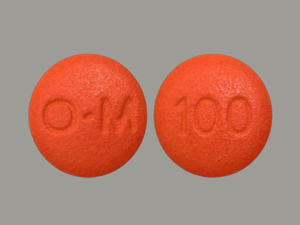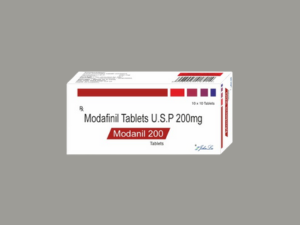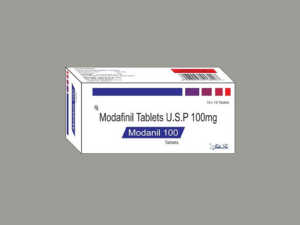
How does Xanax 2mg help to treat post-traumatic stress disorder?
Table of Contents
What is post-traumatic stress disorder?
Post-traumatic stress disorder (PTSD) is a treatable anxiety disorder affecting around one million Americans yearly. Post-traumatic stress disorder is a condition characterized by failure to recover after witnessing or experiencing a terrifying event.
PTSD can last for months or years, with triggers that usually bring back memories of the trauma accompanied by extreme physical and emotional reactions.
Symptoms of PTSD include avoidance of situations that bring back the trauma, nightmares or flashbacks, heightened reactivity to stimuli, and depressed mood or anxiety.
Treatment of PTSD generally comprises different types of psychotherapy and medications to manage symptoms.
What are the main symptoms of PTSD?
Post-traumatic stress disorder (or PTSD) symptoms can start within one month of a traumatic event, but sometimes symptoms might not appear until a few years after the event.
These symptoms usually cause significant problems in social or work situations and relationships.
The symptoms of PTSD could also interfere with your ability to go about your regular day-to-day tasks. PTSD symptoms are grouped into four types:
- Avoidance
- Intrusive memories
- Negative changes in your mood and thinking
- Changes in your physical and emotional reactions
Post-traumatic stress disorder symptoms may vary over time or vary from person to person.
Intrusive memories
Symptoms of intrusive memories can include:
- Unwanted and recurrent distressing memories of the traumatic event
- Reliving the traumatic event like it was happening again (i.e., flashbacks)
- Severe physical reactions or emotional distress to something that reminds you of the traumatic event
- Nightmares or upsetting dreams regarding the traumatic event
Avoidance
Symptoms of avoidance can include:
- Avoiding people, activities, or places that remind you of the traumatic event
- Trying not to talk or think about the traumatic event.
Negative changes in mood and thinking
The symptoms of adverse changes in mood and thinking may include:
- Hopelessness about the future
- Negative thoughts regarding yourself, other people, or the world
- Difficulty maintaining close relationships
- Memory problems, including unable to remember vital aspects of the traumatic event
- Feeling detached from friends and family
- Feeling emotionally numb
- Difficulty experiencing positive emotions
- Lack of interest in activities or things that you once enjoyed
Changes in emotional and physical reactions
The symptoms of changes in emotional and physical reactions (also known as arousal symptoms) can include:
- Always being on guard for danger
- Being easily startled or frightened
- Self-destructive behavior, for example, driving too fast or drinking too much
- Trouble concentrating
- Trouble sleeping
- Overwhelming guilt or shame
- Irritability, angry outbursts, or aggressive behavior
For children six years and younger, signs and symptoms can also include:
- Frightening dreams that can or can not include aspects of the traumatic event
- Re-enacting the traumatic event or some aspects of the traumatic event through play
Why did Xanax use to treat PTSD?
Xanax is a medication that treats anxiety disorders (including PTSD) and panic disorder (unexpected and sudden attacks of extreme worry or fear about these attacks).
Xanax is in a drug class known as benzodiazepines. Xanax works by decreasing abnormal excitement in your brain.
You may use Xanax for PTSD since Xanax treats PTSD by increasing the amount of the neurotransmitter GABA in your brain to promote calmness and a relaxed feeling.
This significantly helps people who suffer from post-traumatic stress disorders to remain calmer in a particularly stressful situation, relieve their PTSD symptoms, help curb panic attacks, and, generally, calm their body’s overactivity.
Therefore, using Xanax for PTSD treatment will be helpful if you experience PTSD symptoms.
List of benzodiazepines for PTSD
Benzodiazepines are a family of medications that work well in the treatment of anxiety, including the symptoms of PTSD.
Doctors often prescribe anti-anxiety medications such as benzodiazepines to treat PTSD when anxiety is its dominant symptom.
The primary choices of benzodiazepines for treating PTSD include:
- Alprazolam (Xanax)
- Diazepam (Valium)
- Clonazepam (Klonopin)
- Lorazepam (Ativan)
You can use Xanax for PTSD anxiety because Xanax is an effective anti-anxiety medication.
Xanax (Alprazolam) dosage for PTSD
The adequate Xanax dosage for treating PTSD is 250 micrograms (0.25 mg) two to three times daily. The dosage can be gradually increased if needed and tolerated. Buy Xanax for PTSD online.
Home remedies for PTSD
Following are some home remedies for post-traumatic stress disorder treatment.
1. Get Enough Rest
You always feel better after a good night of deep and restful sleep. Depending on your age and activity levels, you should aim for anywhere between seven to nine hours of sleep each night.
It is good to put together a relaxing bedtime ritual such as having a shower, listening to some calming music, reading something funny and light, and switching off the screens two hours before bedtime is also wise, as blue light interferes with circadian rhythm and sleep patterns.
Although it can be tempting, avoid self-medicating with drugs and alcohol. Substance abuse only increases anxiety, irritability, and depression in the long run and could put your recovery back in many steps.
2. Adopting a Healthy Lifestyle
Leading a healthy lifestyle is another natural way to ease your distressing symptoms of post-traumatic stress disorder.
You can also use specific relaxation techniques such as deep breathing, mindfulness, massage, or yoga to activate your body’s natural relaxation response.
Eating a healthy diet every day full of fresh vegetables and fruits, whole grains, and lean protein helps keep your mind clear.
Omega-3s play a vital role in the emotional health of your brain, so incorporating foods like fatty fish, for example, salmon, flax seeds, and walnuts, into your daily diet is a good option.
Limiting fried food, processed food, starchy carbohydrates, and excess sugar keeps mood swings and sugar crashes to a minimum.
3. Heal Your Adrenal Glands
Your adrenal glands generate your natural stress response, the ‘fight or flight response.’ These hormones include the stress hormones noradrenaline and adrenaline, and cortisol. They are central to much of post-traumatic stress disorder’s mental and emotional experience.
The stress response is the link between your brain and body, where a stressful memory or thought will have a physical impact, causing your body to release hormones that cause anxiety symptoms such as panic attacks or irritability.
If your adrenals are overstimulated, your brain’s ability to function is subsequently affected. Restoring a healthier hormone balance will make you feel more relaxed during your day and help you sleep better.
Various supplements can assist you with this. With your doctor’s suggestion, following a specific diet for this purpose may also help get your adrenal glands back on track.
Conclusion
Post-traumatic stress disorder is a chronic condition that highly negatively impacts sufferers, including their families and relationships.
However, post-traumatic stress disorder (PTSD) is treatable with the proper medication, such as Xanax. Several natural therapies, like those mentioned above, can also be used to treat the effects of post-traumatic stress disorder (PTSD).
These allow the sufferer to repair their mind and body to help them live happier, healthier lives.





